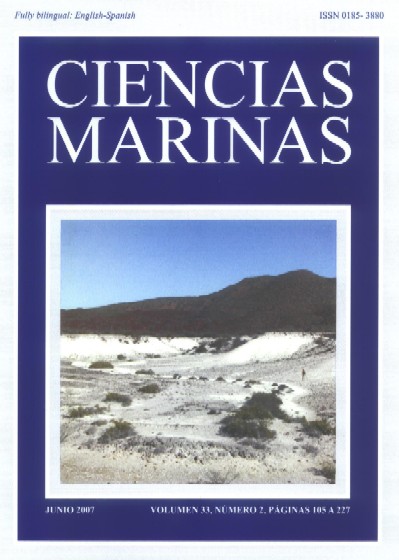Fish diversity associated with gas platforms: Evaluation of two underwater visual census techniques
Main Article Content
Abstract
Se estudiaron las comunidades ícticas asociadas con plataformas extractivas mediante dos técnicas de censos visuales submarinos: transectos y conteos de puntos móviles. Los datos se tomaron a cuatro profundidades en tres diferentes plataformas situadas en el Mar Jónico (Crotone, Italia). Se registraron un total de 25 especies de peces pertenecientes a 12 familias. Se observaron diferencias significativas entre ambos métodos de muestreo y las profundidades en cuanto a la estructura de la comunidad íctica, la riqueza de especies y la abundancia de peces. El promedio de peces registrado con el método de transectos siempre fue mayor que el registrado mediante puntos móviles, mientras que lo contrario sucedió para las abundancias medias. Las especies gregarias como Boops boops, Chromis chromis, Anthias anthias y Oblada melanura fueron las que más contribuyeron a las diferencias en la estructura poblacional. Ambas técnicas permitieron observar especies que no son comúnmente capturadas con artes de pesca. Cuando se utilizan las dos técnicas, éstas proporcionan información complementaria con respecto a las comunidades ícticas estrictamente asociadas con las estructuras de las plataformas.
Fish assemblages associated with offshore platforms were surveyed using two underwater visual census techniques: strip transects and mobile point counts. Data were collected from four depth ranges at three platforms off Crotone, Italy (Ionian Sea). A total of 25 fish species belonging to 12 families were recorded for the three platforms. Significant differences between sampling methods and depth were observed in the fish assemblage structure, species richness and fish abundance. The mean number of species recorded with the strip transect method was always greater than that obtained with mobile point counts, whilst the opposite pattern was observed for mean abundances. Gregarious species such as Boops boops, Chromis chromis, Anthias anthias and Oblada melanura were responsible for most of the differences in the assemblage structure. According to our results, both methods allowed us to observe species that are not usually caught by means of fishing gear. When both census techniques are used, they provide complementary information about the fish assemblages strictly associated with the platform structures.
Fish assemblages associated with offshore platforms were surveyed using two underwater visual census techniques: strip transects and mobile point counts. Data were collected from four depth ranges at three platforms off Crotone, Italy (Ionian Sea). A total of 25 fish species belonging to 12 families were recorded for the three platforms. Significant differences between sampling methods and depth were observed in the fish assemblage structure, species richness and fish abundance. The mean number of species recorded with the strip transect method was always greater than that obtained with mobile point counts, whilst the opposite pattern was observed for mean abundances. Gregarious species such as Boops boops, Chromis chromis, Anthias anthias and Oblada melanura were responsible for most of the differences in the assemblage structure. According to our results, both methods allowed us to observe species that are not usually caught by means of fishing gear. When both census techniques are used, they provide complementary information about the fish assemblages strictly associated with the platform structures.
Downloads
Download data is not yet available.
Article Details
How to Cite
Consoli, P., Azzurro, E., Sara, G., Ferraro, M., & Andaloro, F. (2007). Fish diversity associated with gas platforms: Evaluation of two underwater visual census techniques. Ciencias Marinas, 33(2), 121–132. https://doi.org/10.7773/cm.v33i2.1106
Issue
Section
Research Article
This is an open access article distributed under a Creative Commons Attribution 4.0 License, which allows you to share and adapt the work, as long as you give appropriate credit to the original author(s) and the source, provide a link to the Creative Commons license, and indicate if changes were made. Figures, tables and other elements in the article are included in the article’s CC BY 4.0 license, unless otherwise indicated. The journal title is protected by copyrights and not subject to this license. Full license deed can be viewed here.

